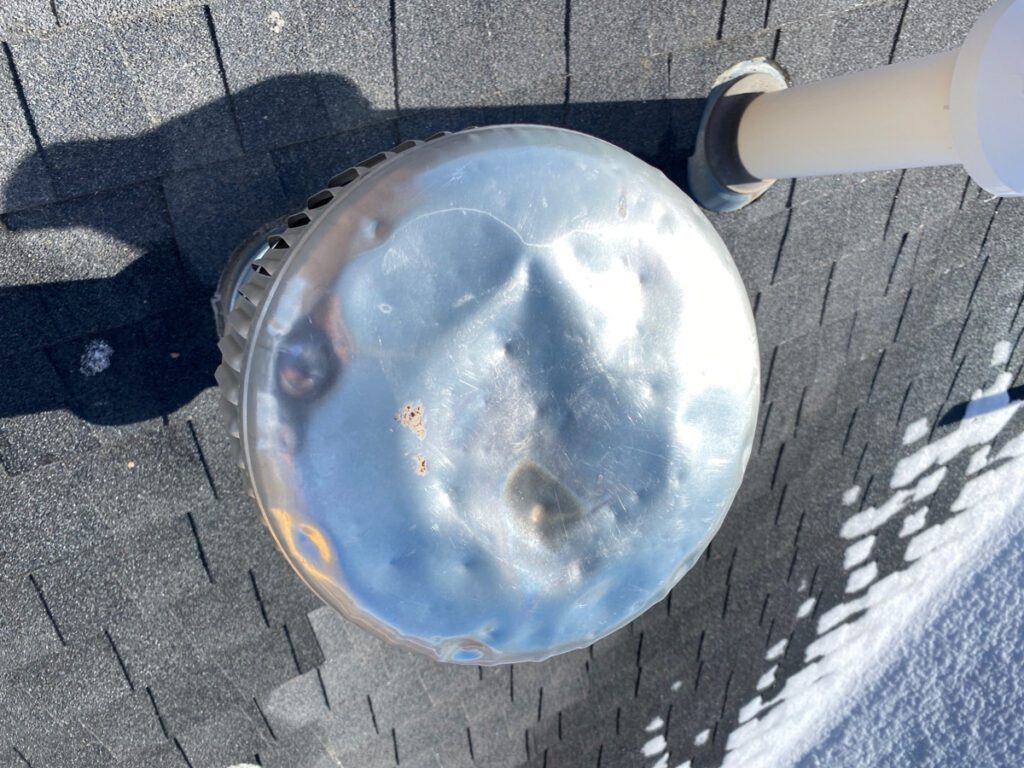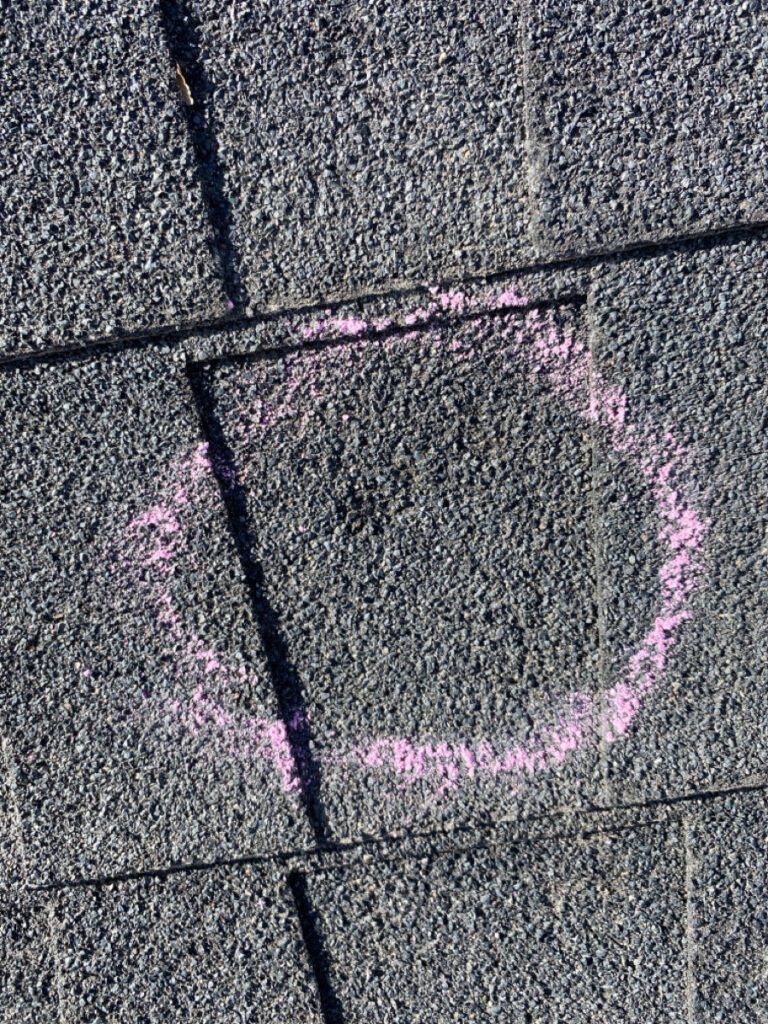How It Works
The first time I experienced a hail storm first hand was in Kansas while traveling cross country.
It was coming down so hard I was sure the windshield was going to shatter and how we didn’t
end up in an accident I do not know. All I know is Mother Nature has a mind of her own and
when caught in her wrath it’s an experience you will remember. Why do I tell you this?
Because the furthest thing from my mind when going through that hail storm was if the car was
damaged. I could care less about the car. Besides, that’s what insurance is for right?
Hail damage to a roof is not as dramatic nor as evident as to a car. In fact, 9 times out 10 if you
don’t know what to look for you won’t even know it’s there. The scary part is if it is there and
you do nothing about it then you may find a leak one day and when you finally come to the point
that you need your insurance company to help you they will not. You waited, you didn’t believe
there was a problem until it was too late.

So here’s how this works. If you are a homeowner with a homeowners insurance policy you
have one to three years from the day a storm happens to file a damage claim depending on
where you live and what type of insurance policy you have. This is important to know because
hail damage doesn’t cause immediate leaking. It usually takes 5-7 years before you ever notice
it’s there. When hail strikes an asphalt shingle it damages the integrity of the shingle. It breaks
down the fiberglass and asphalt mat that’s there to keep water out; it takes decades off the life
of the shingle in a matter of moments. It takes years before water gets underneath the shingle
and ruins the plywood and begins showing signs of leaking from the interior of the home.
If you are a homeowner that’s had a weather event come through your neighborhood and you’re
willing to take the first step in this process this is likely what you will experience. First, you need
an on site inspection. You need someone that knows what hail damage looks like, how much
damage is needed to justify filing a claim, and someone that will present the proof of damage to
you and provide the insight you need to make an informed decision. You need to see photos of
damage, know what the insurance is looking for, and be confident in your understanding so you
can make the final call. This is your home and this is your insurance policy. A good
representative is going to present you with the knowledge and the proof for you to make the
decision. When it comes down to it, this first step is designed to give you peace of mind rather
you file a claim or you do not.

Let’s say that you determine there’s adequate damage to file the claim. So you go ahead and
do that. Dealing with insurance companies can be a simple process or it can be a nightmare;
you really never know what you’re getting into beforehand. There are over 132,000 insurance
adjusters in the United States. Each one has their own personality and their own personal
touch on how they handle claims. Having a company that knows the guidelines in which all
these claims are subjected to could be the difference between you getting a roof replaced and
you walking away with a bad taste in your mouth and a problem you can’t solve. During this
step of the process your insurance company is going to investigate the claim. First, they send
either an adjuster from their company or an independent adjuster to inspect the roof. An
adjuster is another word for investigator. They will reach out to you and find a time to come look
at the damages. They will take photos and document what they find. If they are an in house
adjuster they will usually tell you what they found and what the verdict is so to speak. If they are
an independent adjuster they will most likely not tell you much as it’s not their decision to make.
An independent adjuster simply investigates and sends what they find to the insurance
company for them to make the final call. The process of your insurance company determining if
they are going to pay takes anywhere from a few days to a few months.

If your claim is approved and your insurance agrees to pay, the next step is to find a reputable
contractor that is going to perform the repairs. You’ll most likely want somebody licensed,
insured, and someone that has a reputation of standing behind their work. If you don’t have a
company that handles the claim from the beginning and coordinates the repairs most likely your
insurance company will tell you to go get three bids so they can compare them. This sounds
like a good practice when in reality do you really want the cheapest contractor performing the
work? Sure it will save the insurance company some money but if it’s your choice why would
you want the cheapest bid to do the work. The good news is if the company you’re dealing with
from the beginning handles all of it then your insurance provider will work with them and this
includes pricing. The insurance has a standard they pay for repairs rather they are replacing
personal items lost in a fire or a roof damaged by a storm. There’s a price that neither the
insurance or the contractor dictates that serves as a standard for pricing of repairs. It’s a
software. It’s called Xactimate. If you are dealing with a reputable company they will use this
software and to be honest most insurance adjusters prefer working with companies that know
what they’re doing so to speak.
Once the work has been completed the company will send proof to your insurance and your
insurance will release funds so everyone can be paid. In most cases the insurance pays you
directly and you pay the company. If you have a mortgage and the check is for a large amount,
usually over $10,000, it will be made out to you and the mortgage company. You’ll have to send
it to the mortgage company and they’ll have to endorse it and send it back. If you have a good
insurance policy that has replacement cost benefits and code upgrades all you should pay for
the roof out of pocket is your deductible. This is to be paid directly to the contractor.
When everyone has been paid and your project is complete the final step is acquiring your
warranties. There are two separate warranties. One is the manufacturer warranty which is the
company that makes the shingle. The process of obtaining the warranty is fairly simple and the
company can point you in the right direction but cannot do it for you. The second warranty is
the labor warranty. Most states will require licensed contractors to warrant their work for a
standard amount of time. In Utah they require 5 years. Make sure you get an invoice marked
as paid that explains the warranty in writing. You’ll want to be sure to have contact information
for the contractor just in case you do have problems arise.
When you’re on the other side of this process you should feel like you’ve come out ahead.
You’ve had your roof replaced, which saved you thousands of dollars down the road, you know
that your insurance provider will step up and take care of you when you need it, and you’ve
been guided through the process by a company that had the foresight to make it easy on you
from start to finish. This is the goal here at Smart Claim. We know what it takes because we do
it everyday. If you have a problem or are unsure if you do please reach out to us. Take that first
step and we will guide you through the process every step of the way.
